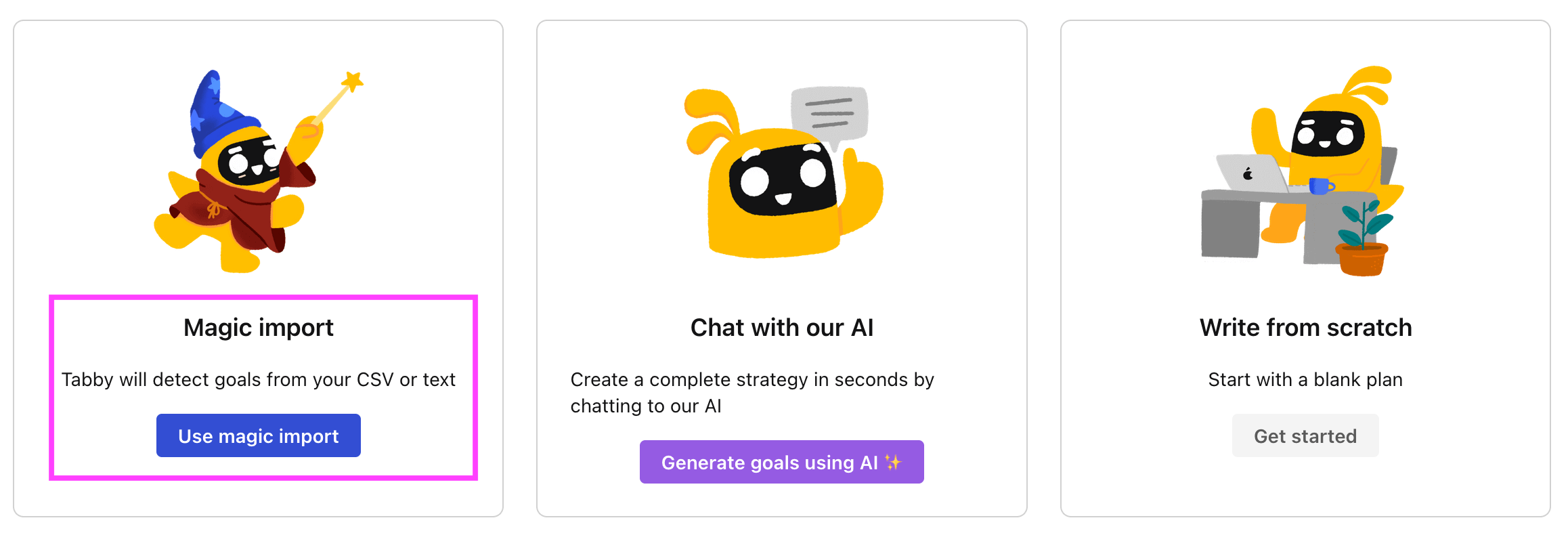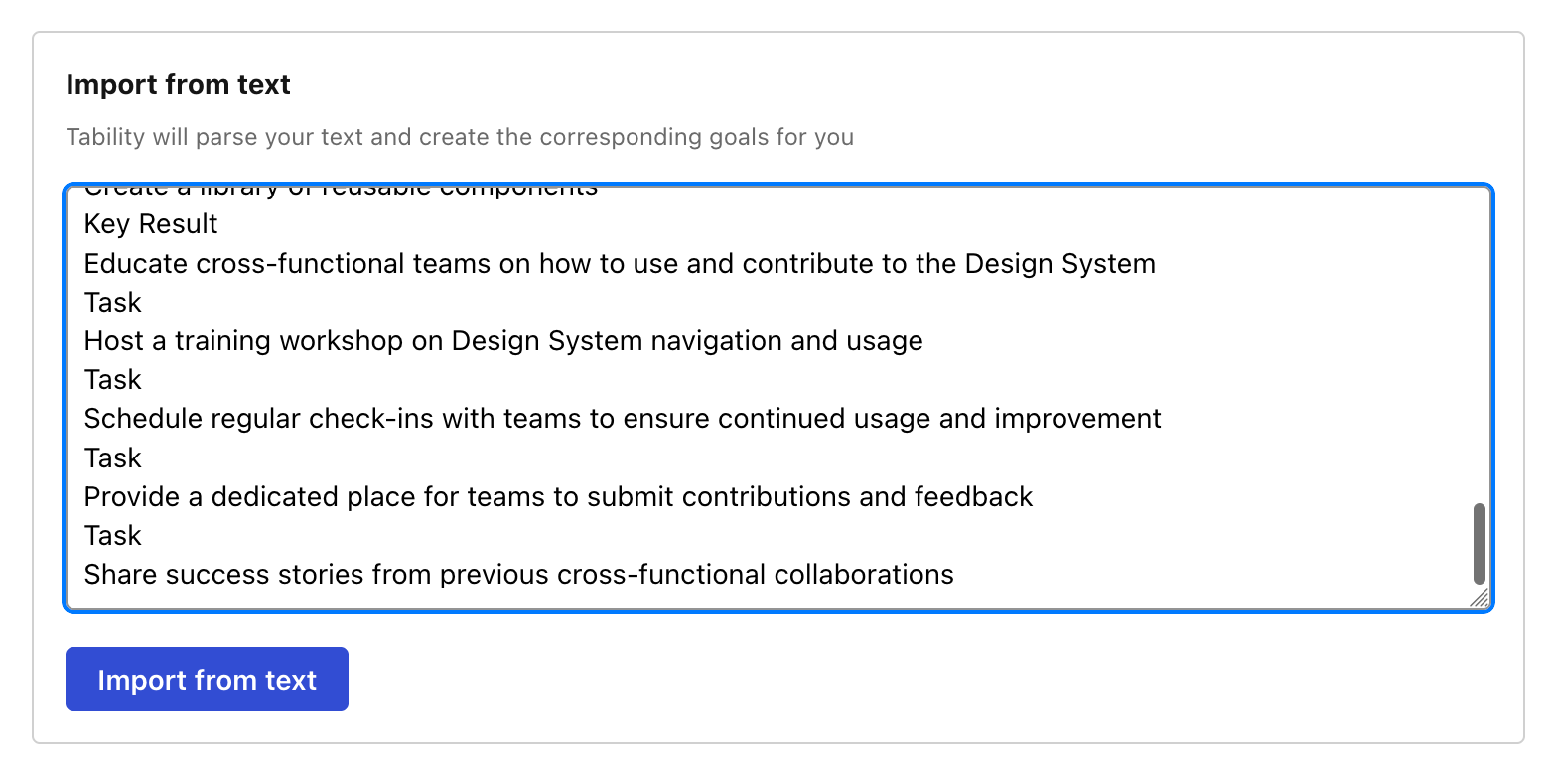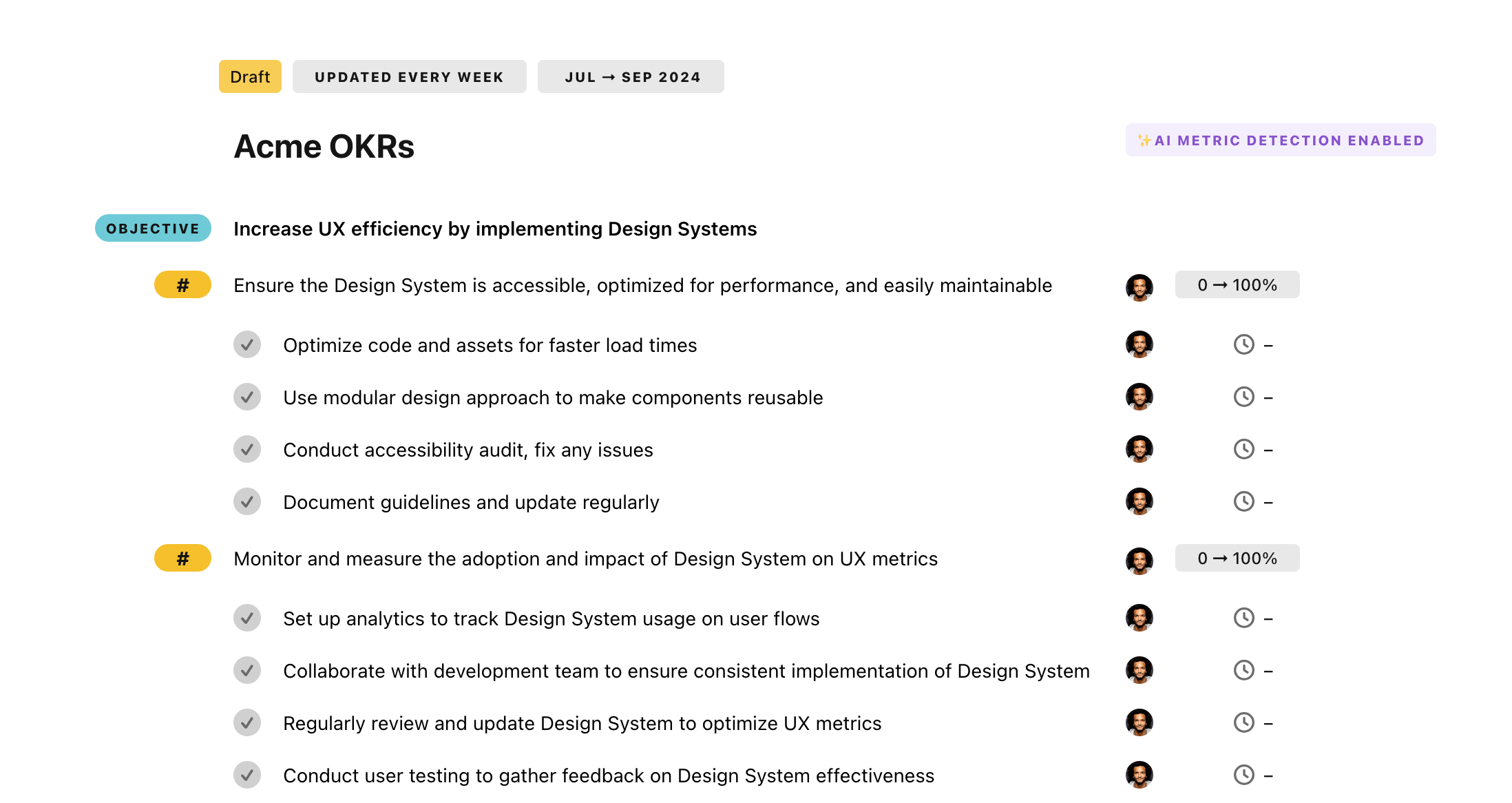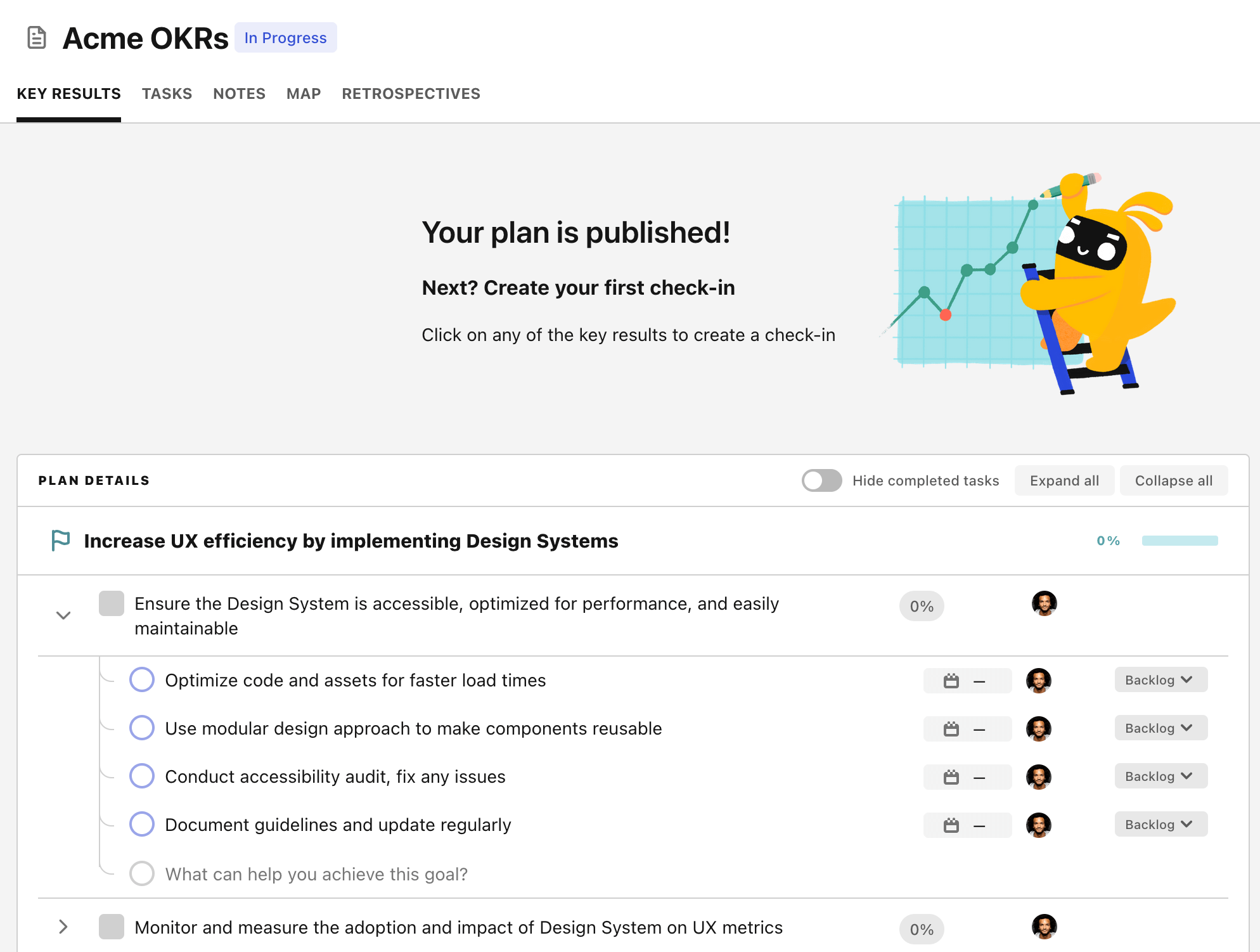OKR template to lower the carbon footprint of building projects
Your OKR template
ObjectiveLower the carbon footprint of building projects
KRDecrease carbon emissions from equipment by 20% through efficient utilization
Train staff for environmentally friendly operation of equipment
Implement energy-saving settings on all equipment
Establish regular maintenance checks for efficiency
KRAchieve 15% improvement in waste recycling efficiency from construction sites
Implement new strategies for efficient waste sorting and recycling
Enforce stricter adherence to waste recycling guidelines by all staff
Perform regular audits of waste recycling procedures on construction sites
KRImplement green sourcing strategy, targeting a 30% increase in eco-friendly materials
Train procurement staff on sustainable sourcing
Develop criteria for green material selection
Identify suppliers producing eco-friendly materials
How to edit and track OKRs with Tability
You'll probably want to edit the examples in this post, and Tability is the perfect tool for it.
Tability is an AI-powered platform that helps teams set better goals, monitor execution, and get help to achieve their objectives faster.
With Tability you can:
- Use AI to draft a complete set of OKRs in seconds
- Connect your OKRs and team goals to your project
- Automate reporting with integrations and built-in dashboard
Instead of having to copy the content of the OKR examples in a doc or spreadsheet, you can use Tability’s magic importer to start using any of the examples in this page.
The import process can be done in seconds, allowing you to edit OKRs directly in a platform that knows how to manage and track goals.
Step 1. Sign up for a free Tability account
Go tohttps://tability.app/signup and create your account (it's free!)
Step 2. Create a plan
Follow the steps after your onboarding to create your first plan, you should get to a page that looks like the picture below.

Step 3. Use the magic importer
Click on Use magic import to open up the Magic Import modal.
Now, go back to the OKR examples, and click on Copy on the example that you’d like to use.

Paste the content in the text import section. Don’t worry about the formatting, Tability’s AI will be able to parse it!

Now, just click on Import from text and let the magic happen.

Once your example is in the plan editor, you will be able to:
- Edit the objectives, key results, and tasks
- Click on the target 0 → 100% to set better target
- Use the tips and the AI to refine your goals
Step 4. Publish your plan
Once you’re done editing, you can publish your plan to switch to the goal-tracking mode.

From there you will have access to all the features that will help you and your team save hours with OKR reporting.
- 10+ built-in dashboards to visualise progress on your goals
- Weekly reminders, data connectors, and smart notifications
- 9 views to map OKRs to strategic projects
- Strategy map to align teams at scale